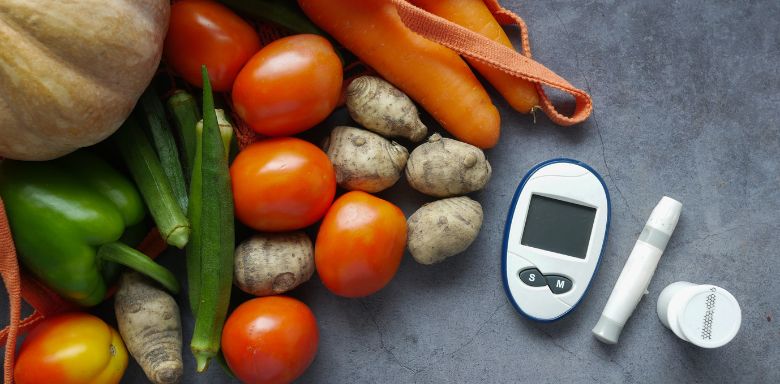Foods, Tips and Smart Habits
Managing diabetes doesn’t have to mean giving up your favorite foods. With the right diet and lifestyle changes, you can control your blood sugar, avoid complications and feel better every day. The key is choosing the right foods, planning meals in advance and making smart snack choices. This guide walks you through how to manage diabetes with diet, and what foods are best.
Understanding the Role of Diet in Diabetes
When you have diabetes, your body either doesn’t produce enough insulin or doesn’t use it efficiently. This leads to elevated blood sugar levels. Food plays a huge role in how your body manages glucose. Choosing nutrient-dense, low-glycemic foods can help keep blood sugar levels stable throughout the day.
Healthy Foods for People with Diabetes
Below is a list of diabetic-friendly foods and why they are beneficial:
1. Leafy Greens
Leafy greens like spinach, kale and collard greens are great to add to your diet. They're low in carbs and calories, and rich in fiber, vitamins and antioxidants. Try them in salads, pan-fried or in smoothies.
2. Whole Grains
Brown rice, quinoa and oats are healthy whole grains you can easily add to meals. They're typically high in fiber, which help slow digestion and sugar spikes. You can cook up vegetables to eat with them, or add to smoothies and breakfast bowls, depending on the type of grain. Always pick whole over refined grains.
3. Lean Proteins
Lean protein like chicken breast, tofu, lentils and eggs are better choices over red meats. These options will help with overall blood sugar levels, and helps support muscle health without spiking glucose levels.
4. Non-Starchy Vegetables
Broccoli, cauliflower, zucchini and peppers are excellent non-starchy vegetables to add to your diet. They're low in carbs and calories, but pack full of nutrients. You can eat them raw or cooked, and use them in tons of different dishes. Get creative, and add some color to your meals!
5. Berries
Blueberries, strawberries and raspberries are high in fiber and antioxidants, and low on the glycemic index. They're delicious to have fresh, but frozen options are good too, and lighter on your wallet. Enjoy them in smoothies, in cereal or on their own as a refreshing snack.
6. Healthy Fats
Yes, healthy fats are a thing. Avocados, nuts, olive oil and seeds can help improve overall heart health and slow carbohydrate absorption. Swap out your cooking oils, and reach for nuts and seeds to snack on instead of high-sodium junk foods.
Smart Snacking for Diabetes
Snacking can help manage blood sugar levels between meals if done right. Focus on snacks that combine protein, healthy fats and fiber. Try out some of these options:
- Greek yogurt with chia seeds.
- Apple slices with almond butter.
- Hard-boiled eggs and veggies.
- Raw nuts or trail mix (unsweetened).
- Cottage cheese with cucumber slices.
Avoid snacks that are high in added sugars and refined carbs like candy, chips or pastries.
Meal Prepping Tips
Meal prepping helps you stick to your eating plan and prevents impulsive, unhealthy food choices. Follow these tips for success:
- Plan meals around lean proteins and veggies.
- Use portion control containers to avoid overeating.
- Cook in bulk and freeze leftovers for busy days.
- Include high-fiber options in every meal.
Tracking meals with an app or food journal can also help you identify which foods affect your blood sugar most.
Additional Tips for Managing Diabetes with Diet
1. Stay Hydrated
Drinking water can help regulate blood sugar and support kidney function. Avoid sugary drinks like soda or fruit juice.
2. Monitor Carbohydrates
Carbs have the biggest impact on blood sugar. Count carbs, spread them evenly throughout the day and choose complex carbs over simple ones.
3. Eat at Regular Times
Skipping meals can lead to blood sugar drops or spikes. Try to eat every 3–4 hours to stay stable.
4. Read Nutrition Labels
Watch for added sugars, total carbs and fiber content. Choose foods with more fiber and fewer refined ingredients.
Healthy Eating is Essential
Managing diabetes with your diet is completely doable when you make informed food choices and develop consistent eating habits. Focus on whole foods, balance your meals, plan ahead and stay hydrated. By building a routine that works for you, you can manage your blood sugar more effectively and live a healthier life every day.
